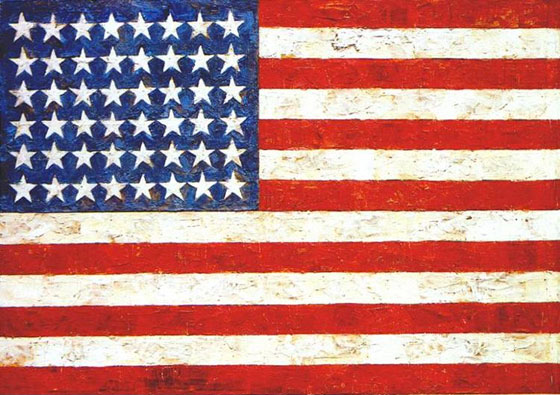
Last Tuesday an anonymous telephone bidder shelled out a record-setting $106 million for a gorgeous 1932 Picasso at ChristieÔÇÖs. Just like that, art and money were back in the news. Of course, the news is the same as it ever was: Preapproved blue-chip artists remain so, and auction houses conflate price and quality. (Also: Private consumption when transformed into public spectacle is a turn-on.) Expect more of the same today, when a gathering of wealthy white people, thrill-seekers, and hangers-on will wedge themselves into ChristieÔÇÖs auction room and watch as works by Picasso, Warhol, Ruscha, Rauschenberg, and many others, all from the collection of Jurassic Park author Michael Crichton, are paraded before them.
This is a perfect storm: A blockbuster author selling blockbuster art at blockbuster prices to blockbuster collectors. The auctioneer will make a show of the auction, gesturing to dapper billionaires in front rows and chirping inside jokes about bidding higher to megacollectors. If a record is broken, the room may erupt into wild applause. Of particular interest: Lot 7, Jasper JohnsÔÇÖs Flag (1960ÔÇô66). Any museum would give its eye-teeth for this small-scaled beauty. The glitzy 280-page catalogue ÔÇö which quotes Steven Spielberg testifying that Crichton was ÔÇ£an out-scaledÔÇØ talent as a collector, and LACMA director Michael Govan saying he ÔÇ£had an incredible eyeÔÇØ ÔÇö estimates the painting will fetch between 10 and 15 million dollars. I imagine it will go for much more.
The spectacle is one thing; the consequences, quite another. The 106 million dollar Picasso (which had a low presale estimate of 70 million dollars) hung in a private home for almost 50 years, and had almost never been lent out to a museum. In the ChristieÔÇÖs catalogue, Sheri Crichton claims that Flag was ÔÇ£MichaelÔÇÖs favorite object,ÔÇØ the ÔÇ£centerpiece of his art universe,ÔÇØ and that he never ÔÇ£let it out of the house.ÔÇØ One wonders why the family doesnÔÇÖt just auction off everything else ÔÇö the Warhols, Rauschenbergs, Lichtensteins, Calders, etc. ÔÇö making millions, even tens of millions of dollars. If Flag was really important to them, perhaps theyÔÇÖd consider simply selling it to a museum at a reduced price of 2 or 3 million dollars. Or, God forbid, donating it. The museum would name a wing after them. Instead, another first-class piece of museum material will, in all likelihood, disappear forever into the hands of a private, perhaps anonymous collector, who may never lend it again. In this way, important works of art that sell at auction die two deaths: We do not see them again for decades, and cannot think of them without also thinking of money.

